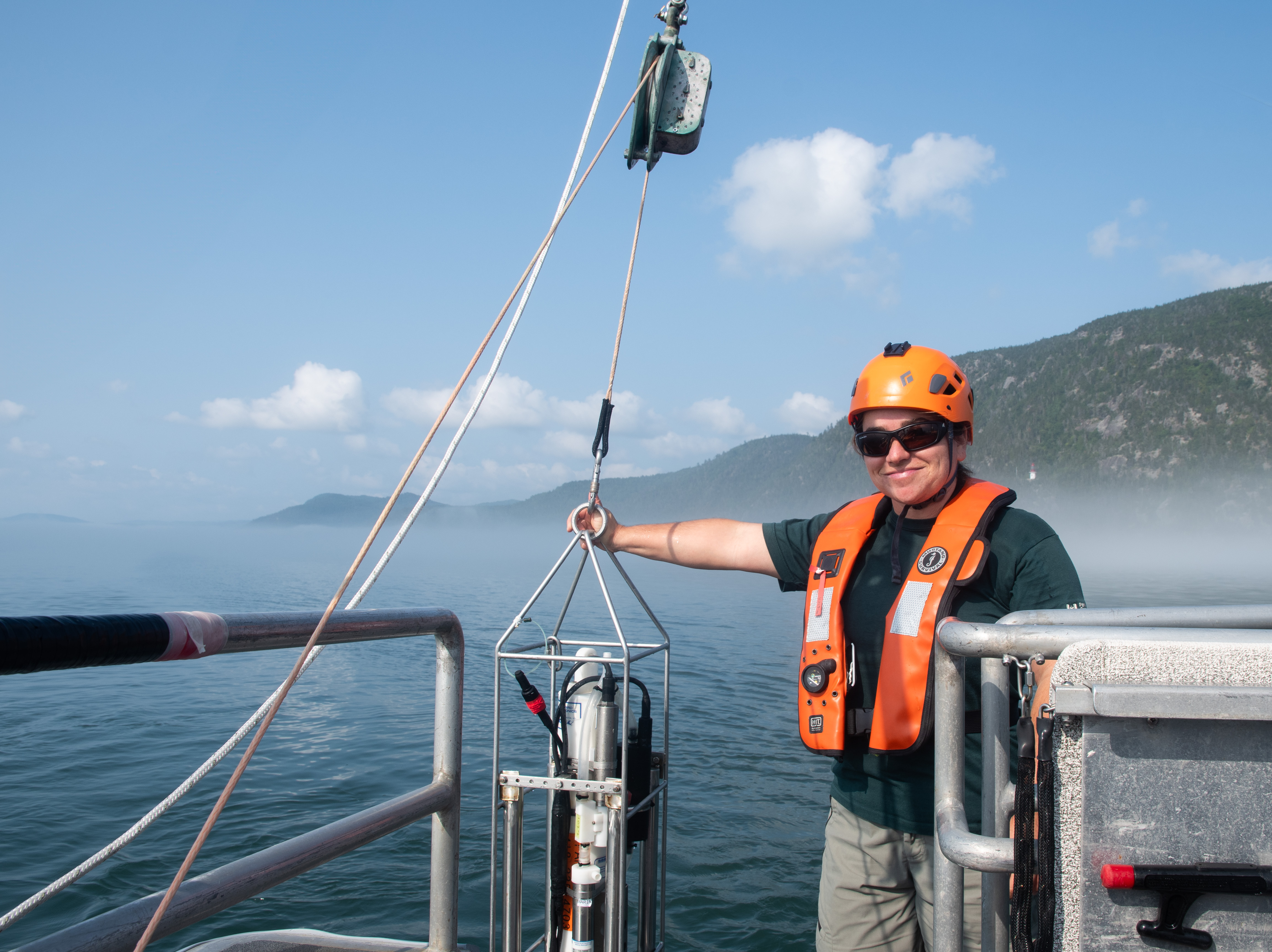By : Sarah Duquette, resource management technician for Parks Canada
This morning, my alarm went off at 5:30 and, believe me, that’s much earlier than usual… But why such an early start? Because today we’ll be timing our work according to the tides!
We meet up with our captain Simon, who is waiting for us aboard L’Alliance with a nice pitcher of freshly brewed coffee. First destination: Cap de la Tête au Chien off the coast of Charlevoix. This is where a hydrophone that Parks Canada deployed in the spring is located, and which has been recording the local soundscape ever since.
After 45 minutes, we see the legendary Cap-de-la-Tête-au-Chien lighthouse emerge through the fog. I love all the ecosystems in the Marine Park, but I have to admit that I have a soft spot for the Upper Estuary, with its spectacular cliffs and calmer, turquoise-hued waters.
Today’s mission will be to make several tows with a very precious probe near two hydrophones moored in the area. The device we’ll be using is called a CTD (conductivity, temperature, depth). More specifically, it is an assembly of probes that measure various physicochemical parameters throughout the water column such as temperature, salinity, dissolved oxygen and chlorophyll.
Every week, the Parks Canada team makes CTD tows in the greatest depths of the Marine Park, i.e. up to 325 m. These data notably allow us to monitor the evolution of temperature and dissolved oxygen in the three different water layers of the Lower Estuary.
However, today is a special day because we are using the CTD for a completely different purpose. We will be making hourly hauls over two hydrophones installed on the seabed. It is known that the physical and chemical conditions of the water have an impact on sound propagation. Depending on the tidal cycle, these conditions vary and therefore change the way sound travels through various water masses. These data will be useful to researchers when they analyze the acoustic data recorded by the hydrophones.
It is now 8:20, the exact peak of high tide and we are positioned above our hydrophone. I wait for the captain to give his green light before deploying the CTD. I activate the pump on our hydraulic winch and lower it into the water with the help of my colleague Eliza-Jane. The first step of carrying out a CTD haul: rinsing! The equipment needs 5 minutes on the surface to acclimatize to the water conditions. This allows air bubbles to be evacuated from the piping and also acclimatizes the probes to local conditions.
Next, we steadily crank the winch to lower the CTD to the bottom. A counting pulley informs us how far down the equipment has reached in the water column. Once we hit bottom (105 m in this case), we immediately begin to bring the equipment back up. I note the GPS coordinates and the precise start and end time of the ascent on a metadata sheet.
Next destination: the north of Île aux Lièvres, where there is another hydrophone belonging to the Université du Québec en Outaouais, which was deployed in collaboration with GREMM. It is located approximately 4 nautical miles from our hydrophone and in shallower waters (45 m). We will carry out the same steps as before.
In the way back to Tadoussac, I connect the CTD to my computer to download the day’s data. The latter will be sent to Fisheries and Oceans Canada for quality control and then to the various teams involved in this project. Combined with those from the hydrophones, these data will notably be used to better characterize the acoustic environment of this important sector for noise-sensitive belugas.








